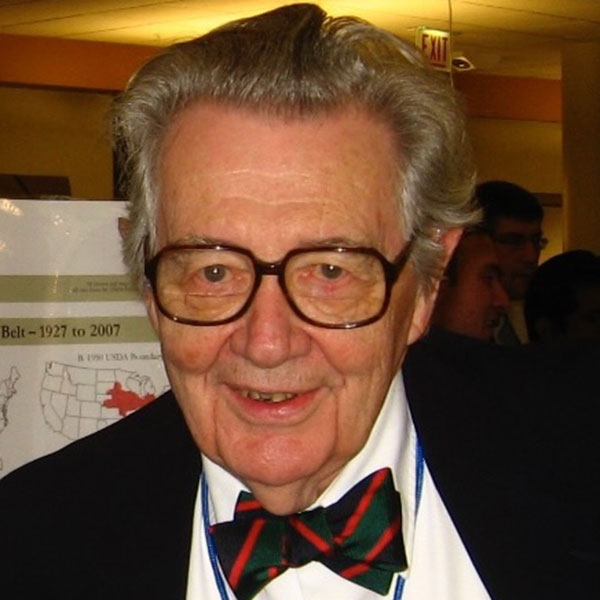John Fraser Hart
1924 - 2024

John Fraser Hart, a towering figure in American geography whose career spanned more than seven decades of active research, teaching, and service to the profession, passed away October 14, 2024, in Madison, Wisconsin, at age 100. A meticulous and productive researcher, he authored scores of articles that appeared in the leading journals of geography. Among his books were The Look of the Land (Prentice Hall 1975), The Land that Feeds Us (Norton 1991), and The Changing Scale of American Agriculture (University of Virginia 2003).
Born and raised in southern Virginia and educated at Emory University (A.B. 1943), he returned following his wartime enlistment in the U.S. Navy and enrolled in classes at the University of Georgia in Athens. There he encountered academic geography and was soon recruited into the profession by the department head, Merle Prunty. Hart went on to Northwestern University, earning his Ph.D. in 1950, and also served on the faculty at Georgia.
The research to which he returned time and again over his long career focused on the land and how people used it. His doctoral dissertation, on hill sheep farming in southern Scotland, was a masterpiece of insight and sensitive description. As the years passed, Hart focused his research almost exclusively on the United States and he became increasingly drawn to questions of economic modernization on the farm. He was early to recognize the massive changes that were taking place both in Southern agriculture (“Land Use Change in a Piedmont County,” Annals of the AAG 70(1980) 492-527) and the Corn Belt (“Half a Century of Cropland Change,” Geographical Review 91(2002) 525-543).
He also contributed to national policy debates over the conversion of agricultural land to urban use (“Urban Encroachment on Rural Areas,” Geographical Review 66(1976) 1 – 17). Hart showed that land which went out of agricultural production was actually a surplus in terms of what was needed to maintain farm production. Urban uses were a comparatively less important reason for land conversion. His studies of land use change on the urban fringe typically involved field work and, more often than not, led to lasting acquaintances with the individuals whose farms he studied.
He served on the faculties at Indiana University (1955-1967) and the University of Minnesota (1967-2015) while making prodigious contributions to the American Association of Geographers and to the profession in general. From 1970 through 1980 he was editor of the Annals of the AAG, and regional councilor, vice president, and president of the AAG. In his AAG presidential address, “The Highest Form of the Geographer’s Art” (Annals of the AAG, 72(1982) 1-29, Hart made the case for why regional study has been so important in geography and why it should continue.
Fraser Hart remained a steadfast advocate for geography, geographers, and good scholarship throughout his career. He was a visible, approachable presence at every AAG annual meeting and at West Lakes and Southeast Division meetings until he was past his 90th year. When he retired from the University of Minnesota in 2015, he was the last member of the university’s faculty who had served in World War II.
He was predeceased by his wife, Meredith, and is survived by his children Laird (Kathie) Hart of Washington, D.C., and Anne Hart (Andy van Duym) of Madison, Wisconsin, and by his grandchildren, Dirk and Raina.
This memorial was contributed by Dr. John C. Hudson, professor emeritus of geography, Northwestern University.